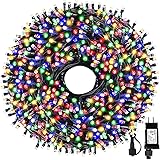Toxicologist testifies at trial of Ontario man who admitted to setting ex-wife on fire
A toxicologist who testified at the first-degree murder trial for Norbert Budai says there is no way of knowing exactly how much fentanyl he had in his system at the time of the attack, and said it’s possible it was administered to Budai after the attack by paramedics.
Dr. Joel Meyer who testified for the defence Friday said he watched and listened to Budai testify about how much alcohol he said he consumed and how much fentanyl he said he snorted on the day he admitted to setting his ex-wife Henrietta Viski on fire and on the day prior to the attack.
Meyer said there was no way of knowing how much fentanyl there was in Budai’s system because the urine sample taken at Sunnybrook Health Sciences Centre taken after the attack only detected whether the drug was in his urine, not how much.
It was June 17, 2022 just before 2 pm when Budai admitted he went to the Chester Le Boulevard townhouse where Viski lived with the couple’s three children with a plastic container full of gasoline. When he arrived, he doused her with gasoline and set her on fire. A day later, the 37-year-old died from complications from burns to approximately 80 per cent of her body.
Budai testified that he had snorted $30 worth of fentanyl he bought that morning. He also said he drank three to six glasses of vodka mixed with soft drinks and claimed his memory of what happened that day wasn’t clear after being up all night. He also said he had gotten high and drunk the day before.

Meyer said based on Budai’s age, height and weight, the alcohol would have disappeared but the fentanyl could have still been in his system, could have affected his cognition and rendered him confused and affected his memory.

Get daily National news
Get the day’s top news, political, economic, and current affairs headlines, delivered to your inbox once a day.
During cross-examination, Crown attorney Matthew Shumka asked Meyer if he was aware that Budai had been given fentanyl by paramedics on his way to Sunnybrook Health Sciences Centre. Budai was taken to hospital to be treated for his own burns he suffered during the gas attack.
Shumka asked if the threshold amount detected in the hospital screening could be attributable to the dosage given in the ambulance. “It would be difficult to determine if that would be the sole contributor to the finding of fentanyl in his urine by the hospital,” Meyer replied. “I cannot rule that out.”
Paramedic Sami Mohammad Sharif was called as a reply witness for the Crown. He testified he treated Budai on the way to hospital because he was screaming in pain. He says he gave him three doses of fentanyl for pain management by intravenous before he arrived at hospital.
At the opening of the trial, Budai tried to plead guilty to second-degree murder but the Crown rejected that plea.
Closing submissions are scheduled for next week.
&© 2024 Global News, a division of Corus Entertainment Inc.
View original article here Source










